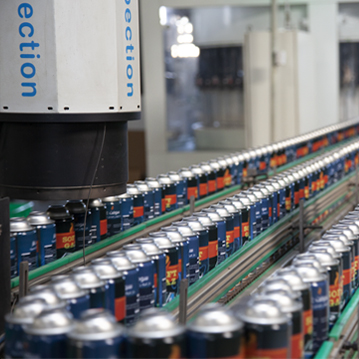
At present market, from the perspective of materials, there are three main types of aerosol cans: aluminum can and tinplate can. But how to choose the proper can to your products? It is important for all of purchaser and buyer.
The first two questions will determine if the product is a standard aerosol or a barrier package product.
Will the propellant be part of the products formulation or will the propellant need to be kept separated from the product?
If the propellant is mixed in with the product such as in whipped cream and pan spray, then a standard aerosol product is being filled. If the propellant and product are kept in separate chambers within the can, such as in aerosol cheese, then a barrier package is required.
What is the product’s viscosity?
If the product has a viscosity near water, it can be packaged as a standard aerosol. If the product’s viscosity is too high and will not flow freely enough to continuously feed the valve then a barrier package is used. A test would be to shake the can and see if the product flows freely. Products that are generally thicker than gels, like save cream, most likely would require a barrier package.
To solve this problem, we have to know the different types aerosol cans.
3-Piece Steel, straiht-wall: A three-piece steel can is constructed from a body that starts as a flat sheet, then rolled and welded into a tube. This forms a seam that runs the vertical length of the can’s body. The top dome and bottom are then seamed onto the body of the can. The standard style can has chimes, the point at which the top dome and bottom are seamed to the can body, outside the diameter of the can’s body.
3-Piece Steel, Necked –In: The 3-Piece Steel, Necked-In can is similar to the standard 3-piece can above but, the chimes are slightly smaller in diameter then the can’s body. In this case, if an overcap is used that has the Page 7 of 32 same diameter as the can’s body you will end up with a smooth transition between the can and the overcap. The welded seam on 3-Piece Steel can, which runs the length of the can’s body, poses a potential problem for some products. The can manufacture has ways to add protection to the seam. You should discuss your product with them and ask them if it will affect the integrity of the seam.
An aluminum can is formed from a single slug of aluminum. The slug is impacted with high force by a ram slightly smaller in Page 8 of 32 diameter than the cylinder the slug is in. The impact force, forces the aluminum up between the cylinder wall and ram forming an open topped tube. The tube then goes through other process such as washing, applying the inside liner, printing and more before it comes to the necking stations. Through a number of stations the top of the tube is formed into the dome shape of the can. The valve opening and bead are also formed at this time. The bead is important because this is where the valve will be attached. Because of the forming process, the bead has a condition called eyelashing (see Figure 5). Eyelashing occurs as the top of the tube is reduced in diameter to form the dome and valve opening. As a result of the reduction in diameter of the aluminum small wrinkles are formed. These wrinkles on the bead will play an important part in the valve selection for your product. A valve with a lathe cut gasket may be required to obtain a good seal between the can and valve. There is a process called machining which removes the eyelashing. You will need to speak with your can supplier if this is required.